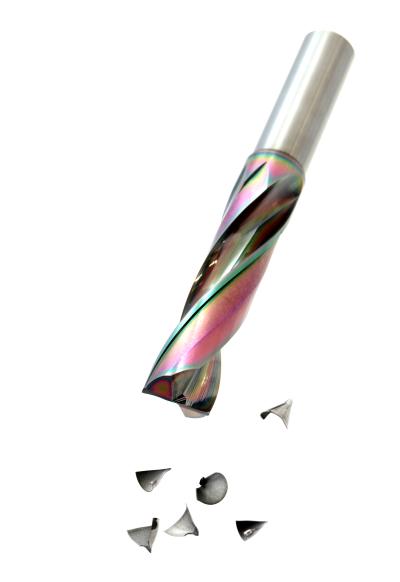
OSG offers the new EXOCARB ADF flat drills. Machining a flat hole traditionally required the use of an endmill and a drill. The ADF drill enables one-step drilling to simplify machining time and tool management. It is suitable for a wide variety of drilling applications including inclined surfaces, curved surfaces, counterboring, eccentric holes, half-hole and thin plates.
One of the prominent features of the ADF drill is EgiAs coating. It suppresses friction with the wear resistance layer and prevents breakage with the nano periodical layer. In addition, ADF’s balanced form and cutting edge enable reduced cutting forces with smaller chips and stable hole entry.
When the ADF drills and conventional drills are compared in counterboring and processed over the center of a pre-existing hole, both drills show little to no positional inaccuracies. However, when it is necessary to process the drill off-center over a pre-existing hole, the position and straightness of the hole made with the ADF drill is five times more accurate than the conventional drills, according to the company.
Also, the ADF drill minimized the amount of shift when drilling a half-hole as compared to both the conventional and competitor drills. Even when drilling on an inclined surface, the ADF drill maintained accurate hole position and resisted chipping.
Contact Details
Related Glossary Terms
- counterboring
counterboring
Enlarging one end of a drilled hole. The enlarged hole, which is concentric with the original hole, is flat on the bottom. Counterboring is used primarily to set bolt heads and nuts below the workpiece surface.
- endmill
endmill
Milling cutter held by its shank that cuts on its periphery and, if so configured, on its free end. Takes a variety of shapes (single- and double-end, roughing, ballnose and cup-end) and sizes (stub, medium, long and extra-long). Also comes with differing numbers of flutes.
- flat ( screw flat)
flat ( screw flat)
Flat surface machined into the shank of a cutting tool for enhanced holding of the tool.
- wear resistance
wear resistance
Ability of the tool to withstand stresses that cause it to wear during cutting; an attribute linked to alloy composition, base material, thermal conditions, type of tooling and operation and other variables.

